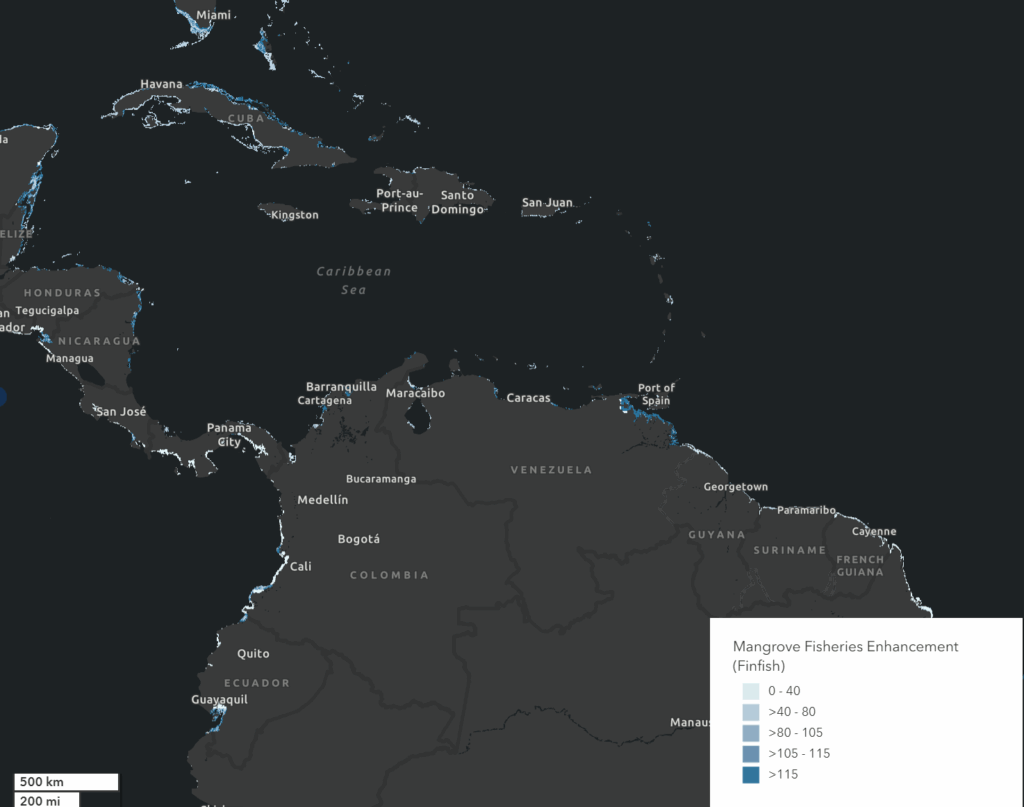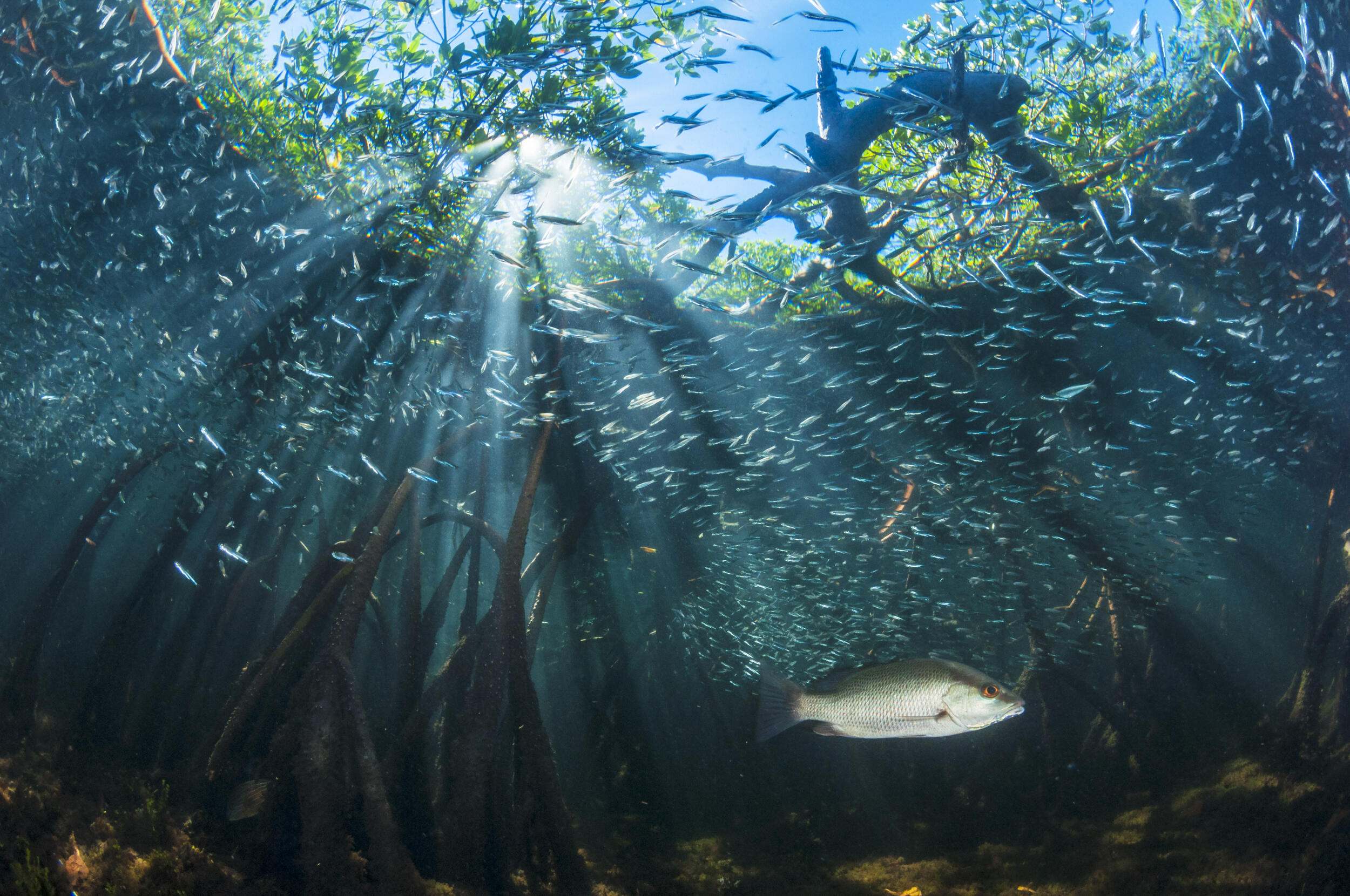Mangroves support over 700 billion fish and invertebrates annually
Over 260 million people around the world rely on marine fisheries for food and income and mangrove ecosystems directly contribute to ocean-based food production. This is especially important for coastal communities in the Global South who rely on small-scale fisheries for nutrition and income. To quantify the importance of mangroves to fish production, TNC convened over 50 partners to complete the first global-scale estimate linking mangroves to fish and invertebrate abundance for 37 commercially important species.
This study shows how important mangrove forests are for young fish and marine invertebrate around the world. Researchers estimated that over 700 billion juvenile fish and invertebrates from commercially important species are generated by mangrove ecosystems every year, which means they play a huge role in supporting biodiversity and fisheries. They used field data and built a global model to see where these species are most abundant, with numbers especially high in regions like Southeast Asia and South America. The findings highlight why protecting and restoring mangroves is essential—not just for nature, but also for the millions of people who depend on fishing for food and income.
This is the first global-scale estimate linking mangroves to fish and invertebrate abundance, providing scientific backing for policy and conservation decisions worldwide. This study provides a first indication at broad global scales on how incredibly productive mangrove nurseries are for marine life. It strengthens the case for mangrove protection by showing just how deeply these ecosystems are tied to global food systems, economic resilience, and biodiversity.
Find the publication here, and view the data on Mapping Ocean Wealth!
Header image credit: Shane Gross



